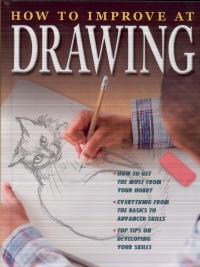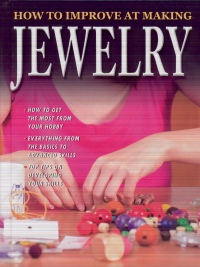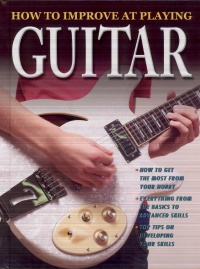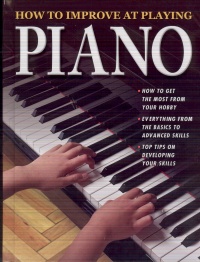| ________________
CM . . .
. Volume XVI Number 39. . . .June 11, 2010 
 |
How to Improve at Drawing. (How to Improve at -).
Sue McMillan.
St. Catharines, ON: Crabtree, 2010.
32 pp., pbk. & hc., $11.95 (pbk.), $20.76 (RLB.).
ISBN 978-0-7787-3598-4 (pbk.), ISBN 978-0-7787-3576-2 (RLB.).
Subject Heading:
Drawing-Technique-Juvenile literature.
Grades 5-8 / Ages 10-13.
Review by Suzanne Pierson.
***1/2 /4
|
| |
|
 |
How to Improve at Making Jewelry. (How to Improve at -).
Sue McMillan.
St. Catharines, ON: Crabtree, 2010.
32 pp., pbk. & hc., $11.95 (pbk.), $20.76 (RLB.).
ISBN 978-0-7787-3599-1 (pbk.), ISBN 978-0-7787-3577-9 (RLB.).
Subject Heading:
Jewelry making-Juvenile literature.
Grades 5-8 / Ages 10-13.
Review by Suzanne Pierson.
***1/2 /4
|
| |
|
 |
How to Improve at Playing Guitar. (How to Improve at -).
Tom Clark.
St. Catharines, ON: Crabtree, 2010.
32 pp., pbk. & hc., $11.95 (pbk.), $20.76 (RLB.).
ISBN 978-0-7787-3600-4 (pbk.), ISBN 978-0-7787-3578-6 (RLB.).
Subject Heading:
Guitar-Instruction and study-Juvenile literature.
Grades 5-8 / Ages 10-13.
Review by Suzanne Pierson.
***1/2 /4
|
| |
|
 |
How to Improve at Playing Piano. (How to Improve at -).
Elisa Harrod.
St. Catharines, ON: Crabtree, 2010.
32 pp., pbk. & hc., $11.95 (pbk.), $20.76 (RLB.).
ISBN 978-0-7787-3601-1 (pbk.), ISBN 978-0-7787-3579-3 (RLB.).
Subject Heading:
Piano-Instruction and study-Juvenile literature.
Grades 5-8 / Ages 10-13.
Review by Suzanne Pierson.
***1/2 /4
|
| |
|

excerpt:
Soloing Techniques
Playing guitar as a solo instrument is really fun, whether you are playing red-hot lead lines on an electric or blistering runs on the classical guitar. There is a whole range of techniques and effects that you can use when playing solos to increase your speed, dexterity, and flashiness. (From How to Improve at Playing Guitar.)
Four new books have been added to the Crabtree "How to Improve At!" series. Drawing, making jewelry, playing guitar, and playing piano are all topics that are going to appeal to many students, and these books will be welcome additions to your library collection for those students.
The books' utilizing step-by-step instructions, well illustrated by photographs and diagrams, allows even beginners to be able to start learning a new skill. The books quickly move to more advanced techniques and projects for those who are beyond the beginner stage.
Each book includes Top Tip boxes to help readers develop their skills. For example, How to Improve at Playing Piano includes the following tip to learn to play staccato.
Mind tricks
Think about the piano being really, really hot. The minute you touch it –– ouch! Take your fingers right off!
Each book also includes a table of contents, glossary and index. The Drawing, Guitar, and Piano books also include a section on famous artists, guitar players and piano players (including Canadian Oscar Peterson), respectively. A nice organizational feature of the books is the colour-coding of the page number boxes to visually cue that you are moving to the next major section of the book.
Although the topics of these books are sure to be popular, one difficulty is the pace at which they progress from the beginner to the advanced skill level. It is worth noting that the series is titled How to Improve At!, not How to Learn a New Skill. Each book does begin with the basics, such as simple tuning methods and playing positions for playing the guitar, but quickly moves to more complicated techniques and melodies.
The publication information says that these books have an interest level from Grade 3 to 6. I think that very few younger students will have the ability to get beyond the first few pages in these books without getting frustrated. The content and the presentation seem more appropriate for Grades 5 and up. I tried some of the beginning drawing lessons and found the directions clear without being juvenile. I can see these books being useful at the secondary level, especially for students with an interest in these areas but a lower reading level.
How to Improve at Drawing includes a history of drawing beginning with cave paintings and moving, in a few paragraphs, through early Egyptians, Greeks, Romans, the Renaissance, up to present day. It identifies the basic equipment needed and covers technique topics, such as perspective and the colour wheel, before providing step-by-step directions for drawing flowers, animals, leprechauns and some pretty fanciful fairies and dragons. Something for everyone. This book ends with information on some famous artists, Da Vinci, Michelangelo, Degas, and Escher.
The clear instructions in How to Improve at Making Jewelry guide the reader to make necklaces, pendants, bracelets, rings, earrings, cell phone charms, and other decorations. The book begins with the history of jewelry around the world, and the equipment and tools needed for the craft. Techniques, such as stringing and prep, links and wirework, are clearly explained and illustrated. The symbolism of jewelry, such as engagement rings and friendship bracelets, is also discussed.
How to Improve at Playing Guitar is fairly evenly divided into four sections: Getting Started, Basic Skills, Intermediate Skills, and Advanced Skills. As in the other books, the colour coded boxes for the page numbers help you identify which section of the book you are in, and when, for example, you have reached the end of the Basic Skills section.
Although the text and illustrations are clearly spaced on the pages, the musical notation seems smaller and more crowded. This is one of the features of the book that will make it less appealing to the younger students that the publishers have identified as the target audience. Older students will have less of a problem with this.
How to Improve at Playing Guitar ends with a look at some well known "superstar guitar heroes," such as Jimmy Page of Led Zeppelin, and it also looks beyond rock and pop and jazz to classical guitarists, such as Andres Segovia.
How to Improve at Playing Piano is also divided into four sections: Know the Instrument, Basic Skills, More Advanced Skills and Piano Pieces. The first two sections account for about half of the book, but, even in this section, the musical notation is sometimes small and intimidating (at least to me). As with How to Improve at Playing Guitar, I think younger students will be quickly frustrated. The book ends with a look at two great piano players, Sergei Rachmaninoff and Oscar Peterson.
Each of these new books in the "How to Improve At!" series will be a useful resource for student to learn the basics and to improve their skills in a new hobby. Students with an interest in these topics will find lots of ways to use and develop their creativity.
Highly Recommended.
Suzanne Pierson is a retired teacher-librarian, currently instructing librarianship courses at Queen's University in Kingston, ON.

To comment
on this title or this review, send mail to cm@umanitoba.ca.
Copyright © the Manitoba Library Association. Reproduction for personal
use is permitted only if this copyright notice is maintained. Any
other reproduction is prohibited without permission.
NEXT REVIEW |
TABLE OF CONTENTS FOR THIS ISSUE
- June 11, 2010.
AUTHORS |
TITLES |
MEDIA REVIEWS |
PROFILES |
BACK ISSUES |
SEARCH |
CMARCHIVE |
HOME |



